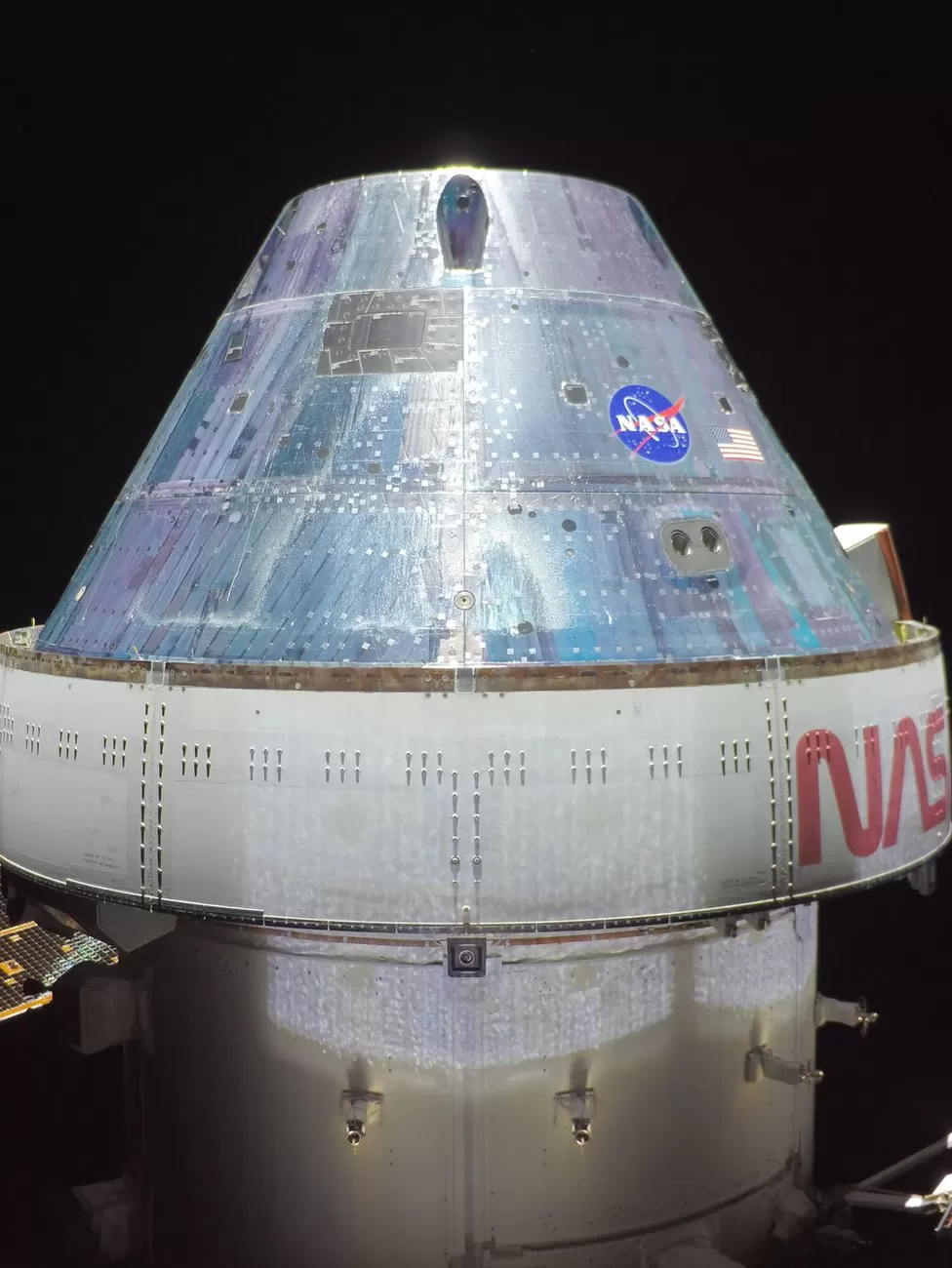NASA’s Artemis I trial mission has successfully concluded this weekend – edging humanity’s return to the moon one step closer.
Three week ago (16 November), NASA’s much delayed Artemis I mission, successful launched the Space Launch System (SLS), the most powerful rocket in the world, from the space agency’s Kennedy Space Center in Florida.
Days after the launch, NASA’s Artemis I mission arrived at the Moon, with its uncrewed Orion spacecraft passing 130 km above the lunar surface. Ten ‘cubesats’ (miniature satellites) were also deployed for future communications, although some of these have reportedly failed to respond.

Orion splash down
On Sunday NASA announced that the uncrewed Orion module splashed down in the Pacific Ocean, west of Baja California, at 9:40am PST (17:40 GMT) on Sunday 11 December, after completing 1.4 million miles around the Moon and returning safely to Earth.

Three mannequins had been strapped into the Orion module carrying sensors to measure conditions to ensure it was safe for future human passengers.
“The splashdown of the Orion spacecraft – which occurred 50 years to the day of the Apollo 17 Moon landing – is the crowning achievement of Artemis I,” said NASA Administrator Bill Nelson.
“From the launch of the world’s most powerful rocket to the exceptional journey around the Moon and back to Earth, this flight test is a major step forward in the Artemis Generation of lunar exploration,” said Nelson.
“It wouldn’t be possible without the incredible NASA team,” Nelson added. “For years, thousands of individuals have poured themselves into this mission, which is inspiring the world to work together to reach untouched cosmic shores. Today is a huge win for NASA, the United States, our international partners, and all of humanity.”
During the mission, Orion performed two lunar flybys, coming within 80 miles of the lunar surface.
At its farthest distance during the mission, Orion traveled nearly 270,000 miles from planet earth, more than 1,000 times farther than where the International Space Station orbits Earth, to intentionally stress systems before flying crew.
“With Orion safely returned to Earth we can begin to see our next mission on the horizon which will fly crew to the Moon for the first time as a part of the next era of exploration,” said Jim Free, NASA associate administrator for the Exploration Systems Development Mission Directorate.
“This begins our path to a regular cadence of missions and a sustained human presence at the Moon for scientific discovery and to prepare for human missions to Mars.”
During re-entry, Orion endured temperatures about half as hot as the surface of the Sun at about 5,000 degrees Fahrenheit. Within about 20 minutes, Orion slowed from nearly 25,000 mph to about 20 mph for its parachute-assisted splashdown.
While in a distant lunar orbit, Orion surpassed the record for distance travelled by a spacecraft designed to carry humans, previously set during Apollo 13.
Recovery teams will secure Orion for the journey home, and the space capsule will return to shore where technicians will offload the spacecraft and transfer it by truck back to Kennedy.
Once at Kennedy, teams will open the hatch and unload several payloads, and the capsule and its heat shield will undergo testing and analysis over the course of several months.
Moon return
NASA’s moon-to-Mars Artemis program is the successor to the Apollo lunar project of the 1960s and 1970s.
In the decades following that, US and Russian space flight endeavours shifted away from the Moon, to low-Earth orbit with space shuttles and the International Space Station.
The Artemis II mission, scheduled for 2024, is planned to take humans through a similar flight path, after which Artemis III is intended to bring humans to the surface.
When astronauts do actually return to the moon, it will be the first time that humans have walked on the surface since Apollo 17 in 1972.
The goal is eventually to established a lunar base on the moon, before pushing out to Mars sometime in the late 2030s.





